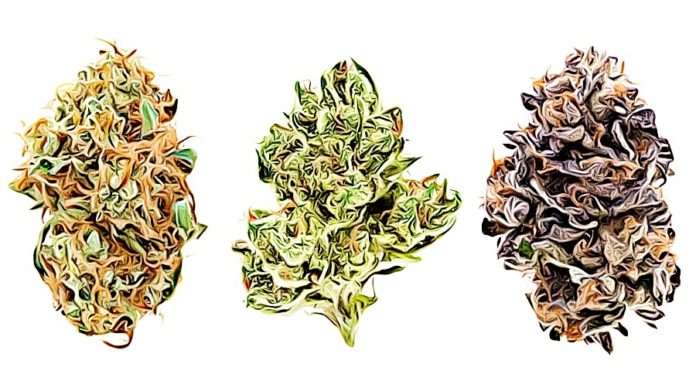In the world of recreational drugs, one particular substance has been making quite a buzz in recent years. Marijuana is a psychoactive drug derived from the cannabis plant, containing tetrahydrocannabinol (THC), which is the active ingredient that causes the psychoactive effects. While marijuana remains to be categorized as a Schedule I controlled substance on the federal level, many states have already legalized its use medicinally and even recreationally in some states.
While most people just know marijuana as a plant associated with the creation of drugs, there are actually different strains of it, which in turn produces different effects on those who use it. This guide talks about those strains, particularly Cannabis Sativa, which contains high concentrations of THC, making it more attractive to recreational users. Read on to find out more about Sativa and its effects, as well as a brief overview of some of the other strains of cannabis.
Differences Between Sativa, Indica, and Hybrid Strains
Today, there are currently around 700 known strains of the cannabis plant. While those strains each have their own unique properties, they are, more or less, products of crossbreeding done by cannabis cultivators. Generally speaking, there are three different types of marijuana classifications, and we’ll discuss each of them here.
Cannabis Sativa
Cannabis Sativa generally comes from warmer parts of the world, such as Central and South America as well as Southeast Asia. The plant itself can reach heights of up to 20 feet when grown outside. They are generally taller than Indica plants and have distinctively longer and more narrow-looking leaves. It is also worth noting that Sativa flowers begin their nodes and expand along the length of their stem, unlike Indica strains where the plant’s flowers cluster around the nodes.
Sativa plants also have much longer vegetation periods, which take anywhere from 10-16 weeks until the plant reaches full maturity during its flowering period. Sativa growers often find it more challenging to grow this strain due to the long vegetation period. However, because of the longer duration, it results in higher yields compared to Indica. A typical Sativa plant can produce around three ounces to a pound of usable marijuana flower for every plant.
One of the defining characteristics of Sativa is its cannabinoid profile. Sativas generally contain a higher concentration of THC when compared to Indica strains. They also carry tetrahydrocannabivarin (THCV), which is a compound with a similar molecular makeup as THC. Scientists have not yet determined if THCV produces psychoactive properties, despite it sharing a lot of similarities with THC.
Cannabis Indica
Cannabis Indica originated in the Middle East, in places such as Afghanistan, Pakistan, and Tibet. Indica plants are also known to be short and stocky, with bushy greeny and chunkier-looking leaves that grow wide and broad. Compared to Sativa, they grow much faster.
Indica strains often have higher levels of cannabidiol (CBD), which is what causes the calming effect in most cannabis-infused products. This particular strain is known for its sedating effect, meaning it has lower THC but higher CBD concentrations. For that reason, Indica is sought after by people who want to be more relaxed instead of having a “head high,” which is more common with Sativa strains. Some examples of Indica strains are the Hindu Kush, Afghan Kush, and Granddaddy Purple.
Hybrid Strains
Aside from the two main classifications of cannabis, there are also multiple hybrid strains that cannabis growers produce. They are able to produce these new and unique strains by using a different combination of parent plants. The reason for growing hybrids is to target specific effects. Hybrid strains are typically grown on farms or in greenhouses from a combination of Sativa and Indica strains.
Since hybrids are created from different parent plants, their appearances greatly differ along with their THC and CBD concentrations. Farmers and producers select hybrids for their unique impacts. They can range from reducing anxiety and stress to easing symptoms of chemotherapy or radiation. Some popular hybrid strains include:
- Pineapple Express
- Trainwreck
- Blue Dream
What Is the Sativa Strain?
Cannabis Sativa L. is a herbaceous species originating from Central Asia that’s been used in folk medicine and as a source of textile fiber since the dawn of time. Interestingly, Cannabis Sativa L. actually has two subspecies: Cannabis Sativa and Cannabis Indica.
The Sativa strain of the cannabis plant is a species of the Cannabaceae family that includes both marijuana and hemp varieties. This particular strain tends to thrive in warmer weather, with most strains originating in countries located near the equator, such as Colombia, Mexico, Thailand, and Southeast Asia.
Throughout recorded history, Cannabis Sativa has been cultivated and harvested for its fiber, seeds, and oil. These raw materials all have industrial, nutritional, and medicinal purposes. Today, Sativa strains still grow wild throughout many humid and tropical areas of the world.
In terms of its physical characteristics, Sativa plants are known for their long and narrow leaves that have an extremely pungent smell. This is due to a distinct terpene profile that produces aromas ranging from fruity, citrus, and sweet to earthy.
How Does Sativa Affect the Body
Cannabis plants coming from the Sativa strain are prominently known to have uplifting effects and are often used to treat emotional disorders, such as depression. Other medical uses of Sativas include:
- Relieving Pain
- Increasing Energy to Reduce Fatigue
- Boosting Focus and Creativity
- Stimulating the Appetite
- Improving the Mood to Alleviate Depression and Anxiety

Side Effects of Sativa
While Sativas are used medicinally, they’re not as common as Indicas. Sativa plants have higher THC concentrations, which is the main psychoactive ingredient of marijuana plants. Despite having a few benefits, there are a lot of side effects associated with it. Like any other powerful medicine, cannabis plants, particularly Sativa, have the potential to produce some unpleasant side effects.
- Anxiety and Paranoia – For many consumers, cannabis is the answer when they want to relax and unwind. However, with the use of Sativa-derived cannabis, some people have reported feelings of anxiety and paranoia, especially those who aren’t used to the effects of cannabis or are new to it altogether. It’s also worth noting that people who already have anxiety on a day-to-day basis are more susceptible to these effects.
- Insomnia – While many Indica strains have the reputation of making people fall asleep, Sativas are intended to do the opposite. Instead, you’ll become much more hyperactive. This is why Sativa strains are not recommended for people who are having trouble sleeping, as it would only aggravate insomnia.
- Dizziness – Smoking cannabis is known to cause a temporary drop in blood pressure, which often causes people to feel a little lightheaded. If you’re lying down in bed for a long time and you suddenly stand up, that feeling of instant dizziness is similar to the side effect caused by Cannabis Sativa.
- The Munchies – Having the munchies can be a problem when using any potent weed. Sativa, in particular, is known to cause this and can be quite unhealthy. While some people take advantage of this effect to induce their appetites, it can have some adverse effects on your health, especially if you mainly eat junk food while having the munchies.
Conclusion
Knowing the different classifications of cannabis can help you understand how some of its negative effects can lead to destructive behavior, especially those who are suffering from addiction. Despite having medicinal properties, the use of cannabis, regardless of its kind, should still be used with extreme caution. It’s best to consult with a medical professional first before trying anything out.















